Recently I watched this video of a young girl aging into an old woman in under five minutes (it’s CGI). Check out the video here.
As you watch, notice how the second-by-second changes aren’t significant at all? For example, when you watch any part of the video for just five seconds, it looks like nothing’s changing. But fast forward by a minute, and the girl is visibly older.

The video five seconds apart. Looks almost the same — you have to scrutinize to see a difference.
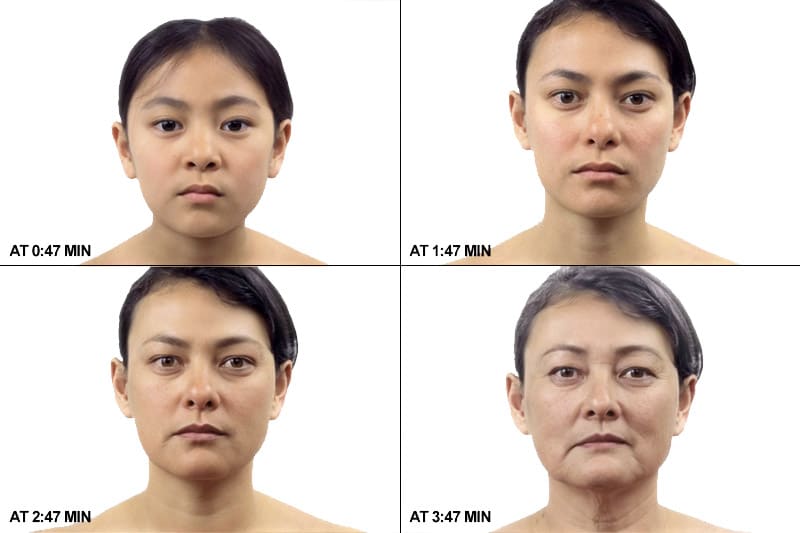
The girl at different 1-minute marks. Notice how big the difference is?
This got me thinking about the power of little changes and how we often underestimate their impact.
How Little Diet Changes Affect Our Skin

(Image: Valentyn Volkov)
Take for example, our diet. In 2011 I did a water fast for 21 days. One of the biggest physical changes I got from the fast, besides weight loss, was a marked improvement in my skin. As I already had a fairly good complexion pre-fast, I was surprised to see it improving during the fast. By the end the 21 days, my complexion wasn’t just “good” — it was extremely smooth, like baby’s skin.
Yet my skin was exactly like this in my early teens. Years of bad eating slowly deteriorated to how it was pre-fast — occasional breakouts, zits, open pores, and oily skin. But I wasn’t aware of this “deterioration.” My day-to-day diet regressions were too small to be noticed, just like how the frame-by-frame changes in the video are too small to be noticed.
But they were there alright. Just because we can’t see the impact right after eating a bad meal doesn’t mean it’s not damaging our body. It’s too small to be noticed by the naked eye but it’s there. Food affects our body at a cellular level, and the kind of food we eat each day add up over time to either give us our best health (and skin), or our worst health (and skin).
Little Actions to Over 1 Million Pageviews
The power of little changes can also be seen on PE.
When I started my blog, I did not have targets like to write X number of articles, to create manifestos or e-books, or to create courses. I did have a big-picture vision of making PE the top personal development blog with millions of readers, but other than that I was mainly focused on getting started with my purpose and taking as much action as I could.

PE when I started in 2008
So every day, I would focus on creating content, marketing, and hitting my weekly traffic targets. Some days my “wins” would be completing an article or getting a media interview. Other days I would not have any tangible achievements, say only writing 200 words for an article (due to writer’s block), doing back-end site tweaks, or even discarding a half-written article after realizing that it wasn’t working out.
Regardless of whether I had a win or not, I would always focus on doing as much as I could each day. With this focus, PE grew quickly over months, then years.
Today, many years later, PE has over 600 articles, 40 manifestos, 21 challenges conducted, and a selection of premium courses on personal growth. Traffic-wise, we’re now at over one million pageviews a month! All these came as a result of constant hard work over many years. Making many little changes daily.
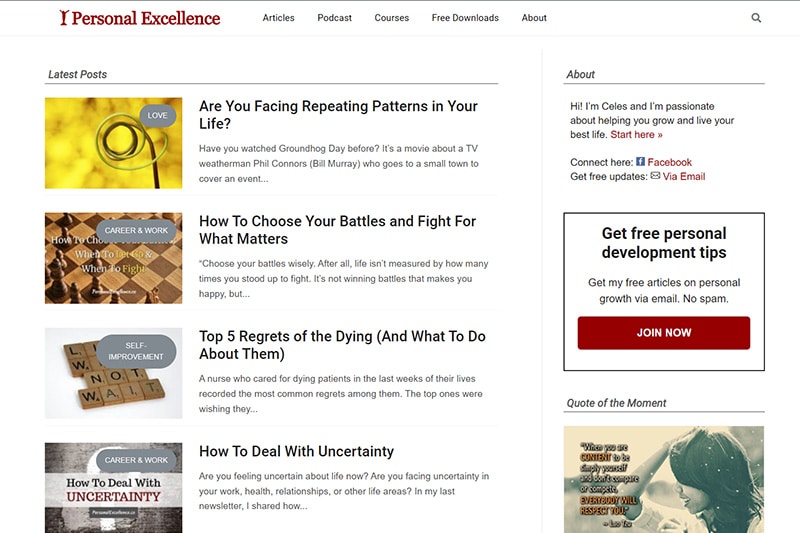
PE today
The interesting thing is that if you are to take a screenshot of PE now and ask my younger self to create a site like this, I would be overwhelmed. That PE has become such an expansive resource wasn’t a deliberate target per se but a result of little changes over time. I figured that as long as I do something that helps at least one person each day, then I’m headed in the right direction. This led to the website you see today.
Underestimating Little Changes
However, some people don’t care about little changes. They prefer to see big changes fast. When they don’t see big changes, they feel like they’ve failed and are ready to quit.
Take for example,
- Weight loss: Many people feel disappointed about their weight loss when they hit a plateau. For some, they think that they’ve “failed” when they regain a bit of weight (which could be due to water retention or muscle gain). When this happens, many give up and revert to past, unhealthy habits, hence negating everything they have done.
- Blogging: Many bloggers start their blogs with great enthusiasm as they prepare to make their mark online. However, when they see only trickles rather than massive traffic surges after a few months, they decide that blogging isn’t for them. They give up and declare their blogs a failure. Hence, most abandon their blogs after a year. For some, they don’t even last past 3 months.
- Dating: In love, it’s easy to get disappointed after a few bad dates or one to two bad relationships. Rather than celebrate what they’ve learned, many conclude that they’re not meant to find love. They feel that they are doomed in relationships and close themselves off in love (as many of my Soulmate Journey participants can attest to).
Such a fixation on big changes is actually debilitating. Why?
- There’s an incubation period for everything. Just because we aren’t seeing big results right away doesn’t mean that things aren’t working. For what it’s worth, things could be going the way they should.
- Little changes pave the way for big changes. You have to lay a road before you can drive on it. By focusing on big changes only, you may well miss the big picture and jeopardize your own success.
- Little changes add up to become big changes over time. As you can see from the graphs below, a small difference may look like nothing in the beginning, but creates a big impact over time:
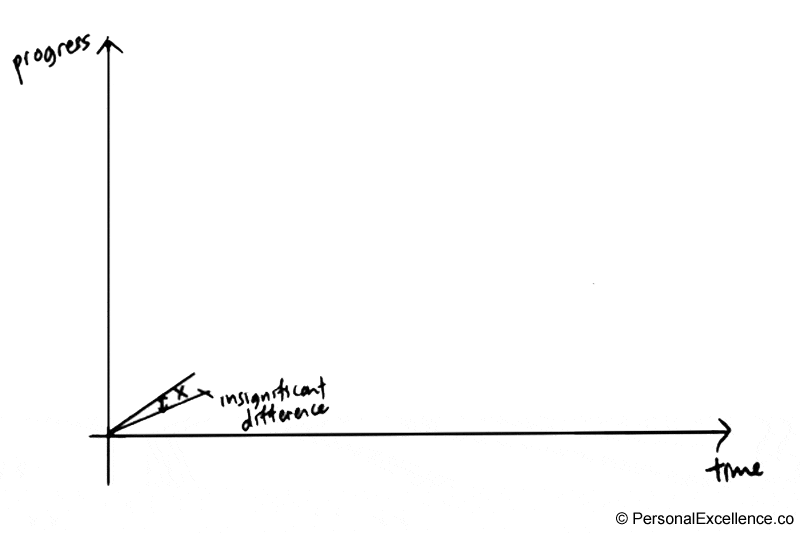
A small change X amounts to an insignificant difference at first
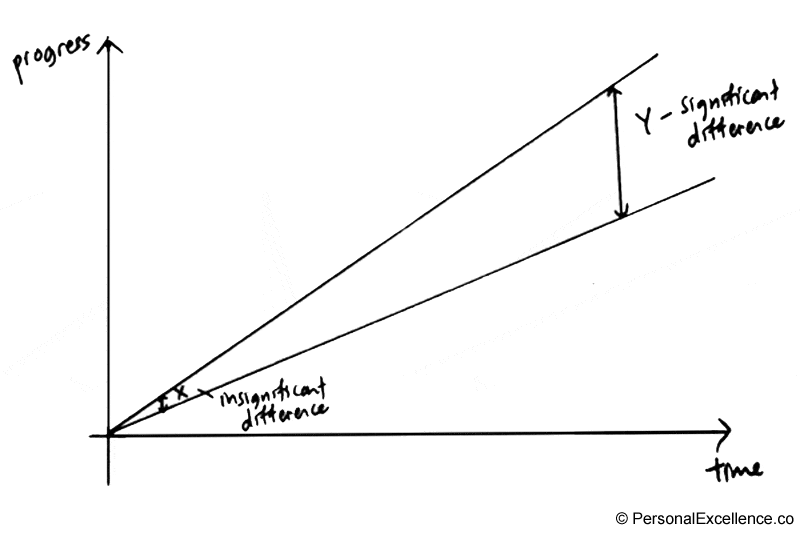
…However, this insignificant difference becomes substantial when done over time (Graph from 5 Procrastination Lies We Tell Ourselves, Debunked)
For example with weight loss, it took me 10 years before I was able to achieve and sustain my current, ideal weight. During this time, I had to work through my root issues of stress eating, negative body image, and self-hate — issues imbued in me when I was a child — before I naturally shed off my excess weight. Had I fixated on fast weight loss (which I was doing initially and it didn’t get me anywhere), I’d still be stuck with yo-yo dieting today. (Read more: Are You Facing Repeating Patterns in Your Life?)

I used to have negative body image issues which I’ve since overcome. More in How To Love Your Body (series) (Image: Vadim Pacev)
With blogging, it didn’t take me long to see initial results, though this was because I knew I was in this for the long haul. So instead of busying myself with short-term actions (like worrying about traffic count or how to get my first client), I focused on long-term actions (like pouring myself into writing the highest quality, timeless material). This helped me cut through the noise online. If I was hung up on earning money or getting many clients at the highest consultation fee, which many new bloggers are, I probably would have given up long ago. I probably wouldn’t even be writing this to you today.
Last but not least with love, I only met my soulmate when I was almost 29 years old. Before that, I had met many guys, gone on many dates, and also met toxic men. I never gave up nor shut myself off in love though. Even though I was disappointed at times, I knew that everything was helping me grow as an individual. I kept making little changes to improve myself as a person and partner, from outward changes like improving my dressing and personal presentation, to inner changes like improving my inner blocks surrounding love. As it turned out, I eventually attracted my partner into my life — who turned out to be someone I already knew, just that we didn’t get together because we weren’t ready for each other yet.
Little Changes You Can Make Today
Don’t get me wrong — big changes are important. After all, I’m always talking about setting big goals and taking big actions. To quote Einstein, “‘Insanity is doing the same thing over and over again and expecting different results.” One should learn to adapt their actions to achieve the best outcome.
But it’s a problem when you focus on big changes to the point where you
- constantly feel disappointed when you don’t get big “enough” results;
- don’t recognize the small successes you are getting; and/or
- beat yourself up for your “lack of results” and hence stop taking action.
Not only is it self-defeating, but it’s silly because what’s causing your “lack of results” isn’t your actual lack of results. It’s your inability to recognize the results you are getting, that little to no changes could well be results (because your goal is in incubation mode, there aren’t many visible changes to be seen), and that sometimes little changes is progress.

This lotus bud has not bloomed yet. Does it mean it’s doomed to die, or that this is simply part of its natural blooming cycle? (Image: atiger)
So here’s my note to you today:
- Is there a goal you’re stalling in? What little action steps can you start with?
- What little results should you watch out for as you work on your action steps? These are easter eggs that tell you if you’re on the right track. Watch out for them and be thankful as you receive them.
- How can you stick to the actions in Step 1? (E.g., if one of your actions is to create a weekly video for your vlog, how can you ensure that you produce a video on time each week?) These actions should be small enough for you to commit over time, yet challenging enough such that you are pushing your boundaries.
Remember, the universe rewards consistent and great work. If you aren’t appreciating the little results you have achieved, if you aren’t following through with little action steps for your goal, then how can you expect the universe to send bigger stuff your way? Get started with small actions first. Commit to them. Appreciate the results that you do get, little or not. Soon, the greater path will reveal itself to you.
Read:






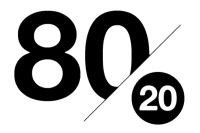
![5 Tips to Deal with Negative Criticism [Video]](https://personalexcellence.co/files/celestv-negative-criticism-200x133.jpg)

 Thanks for reading. If you like my free articles, join my private email list and get my latest updates and articles sent right to your inbox.
Thanks for reading. If you like my free articles, join my private email list and get my latest updates and articles sent right to your inbox.